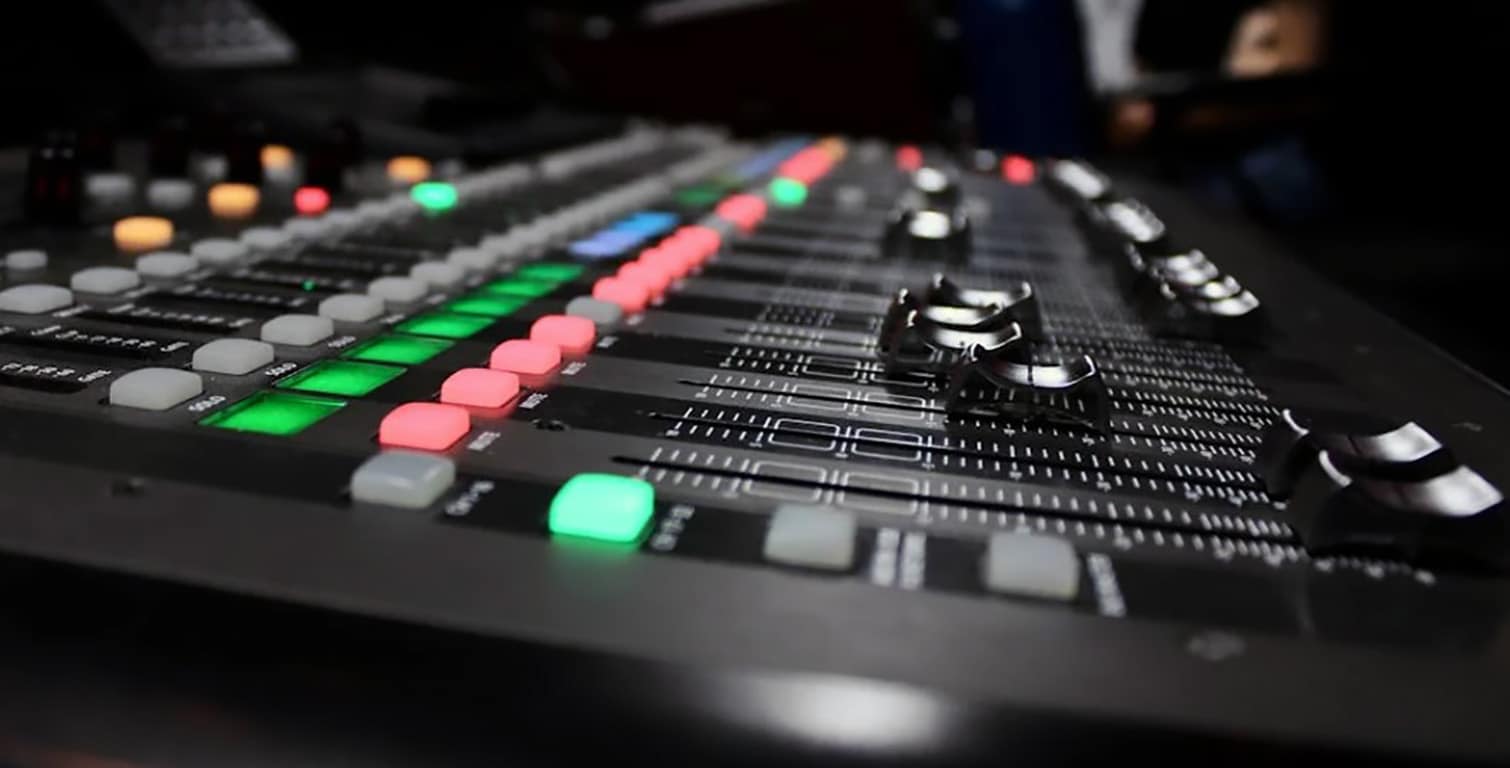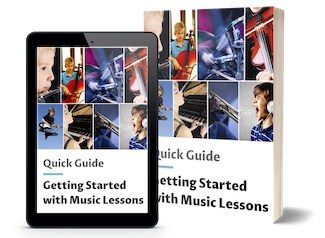Best
Overall
Audio Interface
2i2 AFFORDABLE YET
GREAT-SOUNDING
INTERFACE
-
Overall: 7/10
-
Best Feature: High-Quality Audio Interface
-
TedScore™: 7/10
Best
Budget
Audio Interface
-
Overall: 8/10
-
Best Feature: 4X4 USB Audio Interface
-
TedScore™: 8/10
Best
Portable
Audio Interface
Usb 96 EXCEPTIONAL AUDIO FIDELITY
-
Overall: 8/10
-
Best Feature:
2 Dual-Purpose Front-Panel
Input Channels -
TedScore™: 8/10
Finding the Cheapest Audio Interface that still delivers quality sound can feel like hunting for treasure. I’ve explored countless options at the lowest end of the price spectrum, and I know what it’s like to balance quality and budget.
In this blog, we’ll explore budget-friendly audio interfaces that won’t make your wallet cry. From established favorites like the Focusrite Scarlett series to surprising newcomers, there’s a lot to discover.
I aim to break down the features and performance of these devices, making it easier for you
Best Budget Audio Interfaces for Beginners
Getting started with music production requires the right tools, and a budget-friendly audio interface can make all the difference. Here, I’ll explore three great options for capturing quality sound without breaking the bank.
Focusrite Scarlett Series
The Focusrite Scarlett Series stands out for its reliability and pristine audio quality. Due to their straightforward setup, these interfaces, like the Scarlett Solo, are perfect for beginners.
Scarlett interfaces are known for their excellent preamps, which ensure a clear sound. They typically come with a software bundle, including DAWs like Ableton Live Lite.
This means even a novice can start recording with ease. Their sturdy construction also means they last, making them a wise investment for your studio.
Focusrite Scarlett 2i2 (4th Gen)
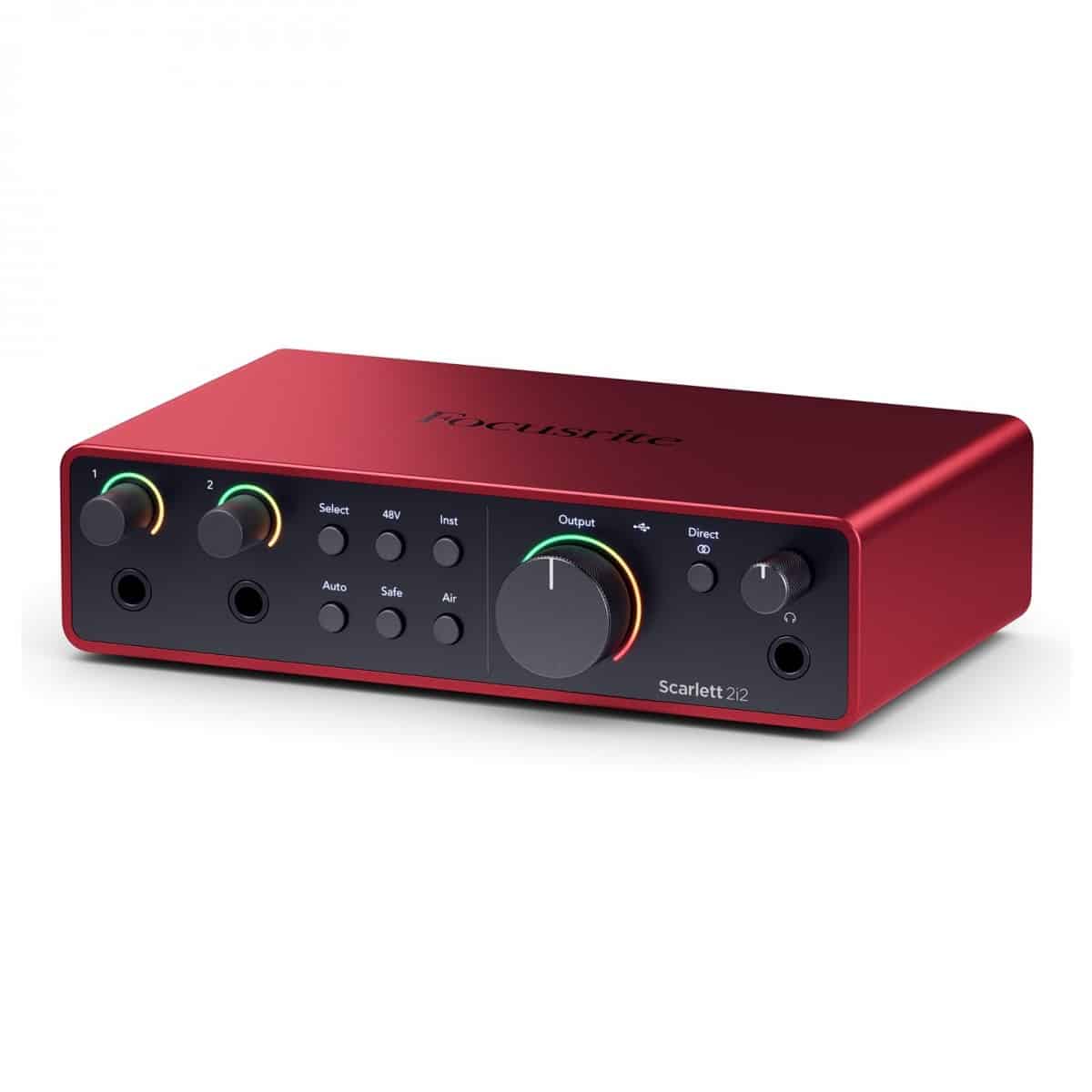
PERFECT FOR: Musicians and content creators of all levels
FEATURES: Ultra-low latency with high-quality 24-bit/192kHz audio
OTHER INFO: Includes Ableton Live Lite & Focusrite Hitmaker Expansion
Focusrite Scarlett 2i2 (4th Gen)
- Focusrite Control compatibility provides maximum flexibility for setting up monitor mixes and routing configurations
- Two virtual inputs enable you to capture a stereo feed with any combination of hardware input and software playback channels
- Improve monitoring features give you better reference over audio
- Optimised audio conversion for the best quality audio every time
- Does not come with any bundled software or plugins
When you click ‘Check Price’, you’ll see there are loads of great places to buy this item. Our personal favorite is Sweetwater for the US, and Thomann and Gear4Music for the UK & Europe.
They are the largest music retailers, with excellent customer service, competitive prices, really fast shipping, and the longest guarantees.
The professional musician who wrote this article combined many things,
from the product build, manufacturer’s reputation through to feedback
from other users, to create our famous TedScore™.
Behringer U-Phoria Models
Moving on to Behringer’s U-Phoria models, these are some of the most budget-friendly options. I recommend the U-Phoria Umc404Hd for its simplicity and effectiveness. It’s an easy choice for those just starting.
The low price doesn’t limit its capability. It features a Xenyx mic preamp, which offers decent sound quality and gets the job done. While it may not have all the bells and whistles of its more expensive counterparts, its performance is quite commendable for its cost.
Behringer U-PHORIA UMC404HD Audio Interface

PERFECT FOR: a wide array of popular recording software
FEATURES: 4X4 USB audio interface ideal for microphones & instruments
OTHER INFO: 24-bit/192khz resolution provides professional sound quality
Behringer U-PHORIA UMC404HD Audio Interface
- 4 x studio-grade midas mic preamps deliver outstanding sound
- Incredibly robust, impact-resistant metal housing
- Compatible with a wide variety of popular recording software
- The phantom power supply often adds a hum to inputs and has poor filtering
When you click ‘Check Price’, you’ll see there are loads of great places to buy this item. Our personal favorite is Sweetwater for the US, and Thomann and Gear4Music for the UK & Europe.
They are the largest music retailers, with excellent customer service, competitive prices, really fast shipping, and the longest guarantees.
The professional musician who wrote this article combined many things,
from the product build, manufacturer’s reputation through to feedback
from other users, to create our famous TedScore™.
Presonus Audiobox USB Options
Presonus Audiobox USB models, particularly the Audiobox USB 96, offer a blend of affordability and functionality. Their user-friendly interfaces make these devices beginner-friendly.
They come equipped with PreSonus Studio One Artist software, which helps streamline your recording process. The Audiobox USB models are also praised for their solid build and stability. As a beginner, I found their plug-and-play capability extremely welcoming, enabling me to focus on music rather than tech issues.
PreSonus AudioBox USB 96

PERFECT FOR: artists with small bedroom setups
FEATURES: Comes with 2 dual-purpose front-panel input channels, each with high-quality mic preamplifiers
OTHER INFO: Individual channel-trim controls with 0 to +35 dBu mic gain range
PreSonus AudioBox USB 96
- Has 2 combo mic/instrument inputs
- 48V phantom power for condenser microphones
- Headphone jack with level control
- LED clip indicator for each channel
- Includes Studio One Artist, Studio Magic, and Ableton Live Lite software
- The preamps are transparent but may not be sufficient for more professional use
When you click ‘Check Price’, you’ll see there are loads of great places to buy this item. Our personal favorite is Sweetwater for the US, and Thomann and Gear4Music for the UK & Europe.
They are the largest music retailers, with excellent customer service, competitive prices, really fast shipping, and the longest guarantees.
The professional musician who wrote this article combined many things,
from the product build, manufacturer’s reputation through to feedback
from other users, to create our famous TedScore™.
Understanding Audio Interfaces
As someone who has delved into the world of music production, I understand the critical role that audio interfaces play. They bridge the gap between musical instruments or microphones and your computer, ensuring sound quality is preserved.
Defining Audio Interfaces
Audio interfaces are essential tools in any recording setup.
Their primary function is to convert analog signals from instruments or vocals into a digital form your computer can process.
Without them, achieving professional-level sound recordings would be challenging.
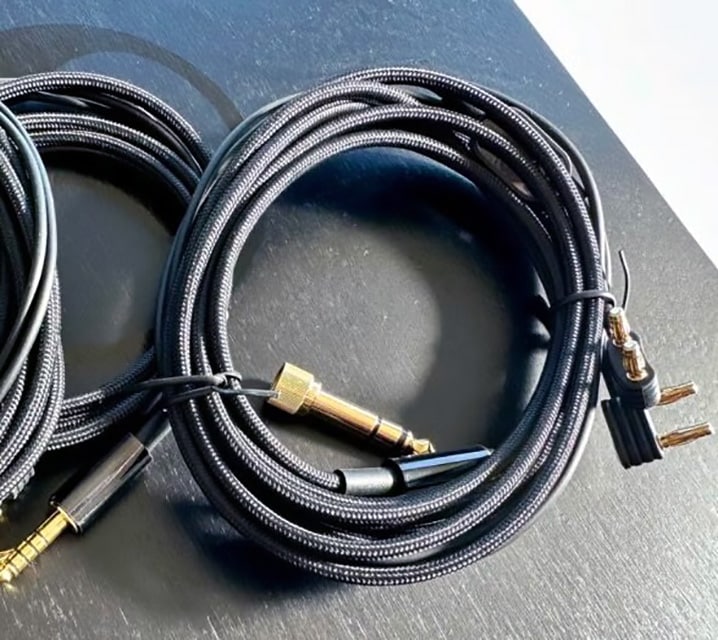
These devices often come with various inputs and outputs, such as XLR and TS/jack connectors. Most modern interfaces connect to computers via USB, making them versatile for different setups.
Overall, they enhance the quality and flexibility of recording projects.
The Importance of Audio Quality
The quality of audio interfaces directly impacts your music production output. High-quality interfaces preserve the clarity and detail of the sound, which is essential for both amateur and professional projects. This equipment ensures that the integrity of audio quality remains intact during the conversion process.
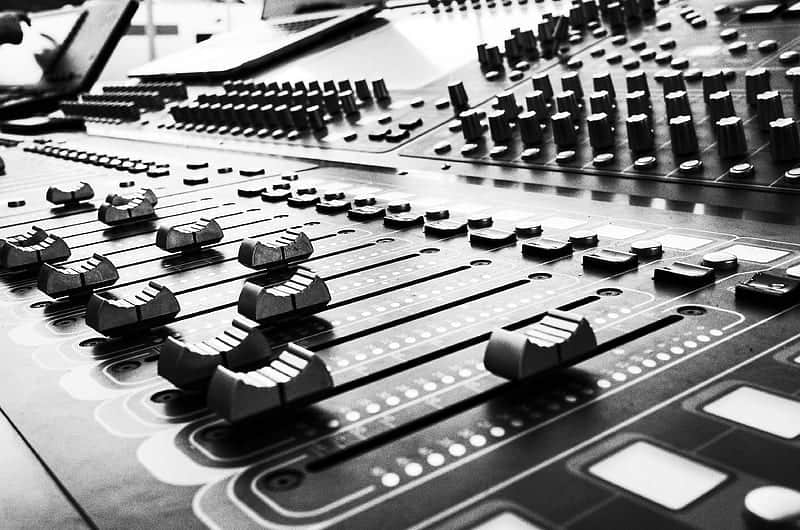
Choosing a reliable interface means less post-production editing. Lower noise levels and better fidelity make mixing smoother, allowing artists to focus more on creativity. Having a good interface is like giving your music a strong, clear voice.
Audio Interface Connectivity
Connectivity is a crucial aspect that I pay special attention to when selecting an audio interface. They typically feature multiple input and output options, including XLR and jack for connecting various devices.
USB audio interfaces are particularly popular due to their compatibility and ease of use.
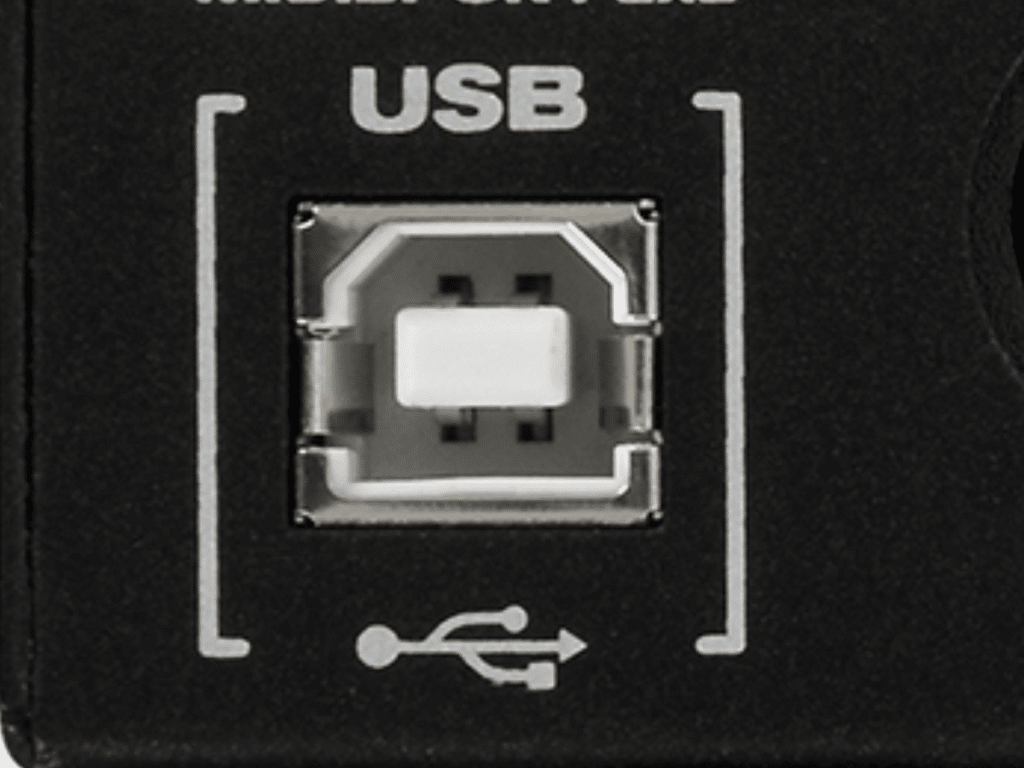
Having different connectivity options means flexibility in handling different recordings, from vocals to instruments. This adaptability in connection helps seamlessly integrate diverse audio equipment into a cohesive recording environment.
Whether you’re recording in a studio or at home, connectivity is paramount for a smooth workflow.
Factors to Consider When Choosing a Budget Audio Interface
When I’m looking for a budget audio interface, I focus on several key factors. These include connectivity options, sound quality through audio resolution, and build quality to ensure long-lasting use.
Connectivity Options
The connectivity of an audio interface is crucial. It is essential to look at the available ports and compatibility with other devices. USB interfaces are popular due to their ease of use and universal compatibility, making them an excellent choice for beginners.
Some interfaces also offer Thunderbolt or FireWire connections, which provide faster data transfer rates, though they may cost a bit more. I always evaluate how many inputs and outputs I need for my setup.
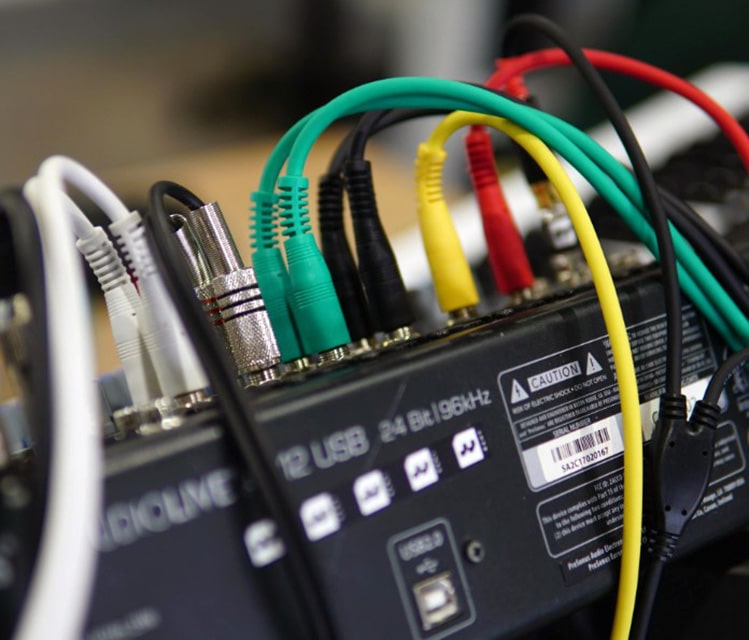
Whether I’m planning to connect microphones, instruments, or other audio equipment, having the right number of ports is essential.
Sound Quality and Audio Resolution
Sound quality cannot be overlooked when selecting a budget audio interface.
I pay special attention to both bitrate and audio resolution, as these determine the clarity and fidelity of my recordings. Higher resolutions often result in better sound, but this doesn’t mean I need to break the bank.
Even affordable interfaces today offer 24-bit and 96kHz recording capabilities, which are usually sufficient for most home recording needs. Preamp quality also plays a crucial role in defining sound quality.
A good preamp ensures cleaner, richer sound, so I always try to read reviews or listen to sample recordings before deciding.
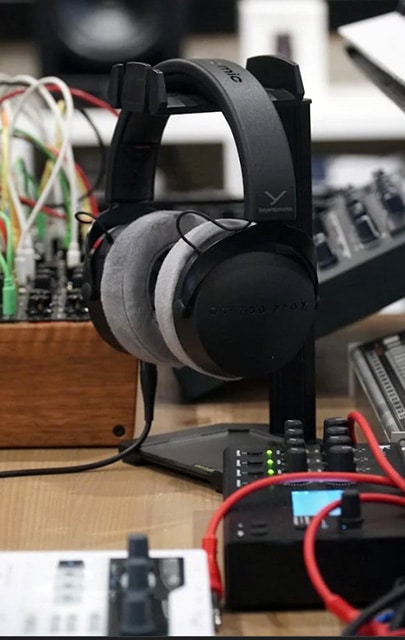
Build Quality and Durability
Durability might not seem important initially, but it guarantees that my investment lasts. I focus on interfaces made with sturdy materials that can withstand regular use.
Metal chassis are generally more durable than plastic ones, providing better protection for the internal components.
Portability is another factor to consider, especially if I’m planning to move the interface frequently. Compact designs are great for travel, but I must ensure they don’t compromise on functionality or quality.
Balancing durability with my specific needs helps me make an informed purchase that offers excellent value over time.
Factors to Consider When Choosing a Budget Audio Interface
When discussing the I/O capabilities and connectivity of affordable audio interfaces, it’s essential to consider how they support various recording scenarios. Key features include XLR and TRS inputs, as well as MIDI and USB connections, which provide compatibility with a wide range of devices.
XLR and TRS Inputs
XLR and TRS inputs are crucial for connecting microphones and instruments. Many budget interfaces offer combo inputs that accept both XLR and TRS connections, giving users flexibility.
These inputs often come with built-in preamps to enhance signal quality.
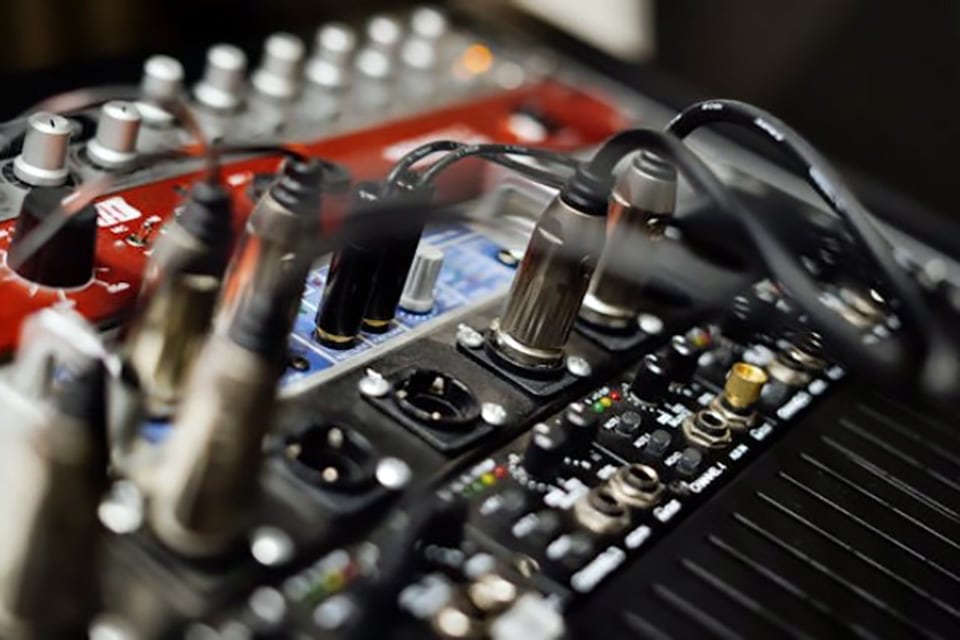
Providing phantom power, they’re ideal for use with condenser microphones, ensuring clear and vibrant audio. With dual inputs, you can simultaneously record vocals and instruments, making it convenient for small studios or home setups.
MIDI I/O and USB Connection
MIDI I/O capabilities expand the functionality of audio interfaces by allowing connections with keyboards, synthesizers, and other MIDI devices. This feature is especially beneficial if you produce music that requires sequencing and digital composition.
USB connections are the norm in budget interfaces, supporting fast, reliable data transfer. A USB-C connection provides even greater speed and power efficiency, ensuring smooth operation across different platforms.
Whether recording on a PC, Mac, or even an iOS device, these connections ensure compatibility and ease of use.
Features That Enhance Recording Experience
Certain features stand out when exploring the world of budget audio interfaces, elevating your recording endeavors. These key elements include direct monitoring coupled with low latency and the critical role of onboard preamps combined with a broad gain range.
Direct Monitoring and Low Latency
Direct monitoring is a game-changer in the world of audio recording.
It lets me hear the audio input straight from the interface without delay.
This zero-latency monitoring feature ensures my performances are tightly synced,
Which is crucial for precision in both live and studio setups.
Low latency further sharpens this experience.
When monitoring my recordings, minimal delay allows me to focus on what matters most—the
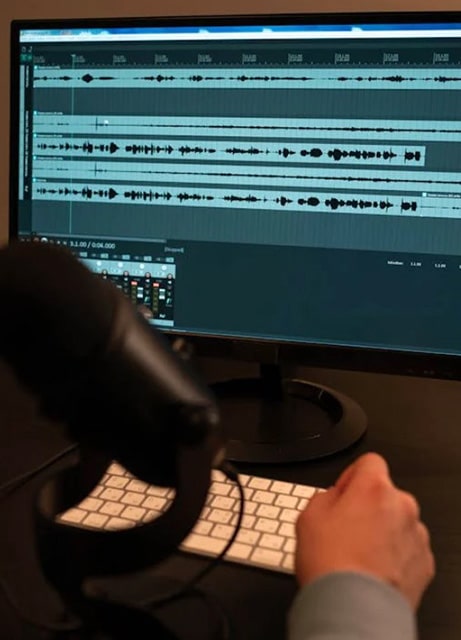
Onboard Preamps and Gain Range
A sturdy preamp is the backbone of any quality audio interface. It’s about grabbing the purest sound from a mic or instrument before it hits the digital realm.
A high-quality onboard preamp ensures that even subtle audio nuances are captured beautifully. This makes a difference, especially when I’m recording quieter passages or dynamic performances.
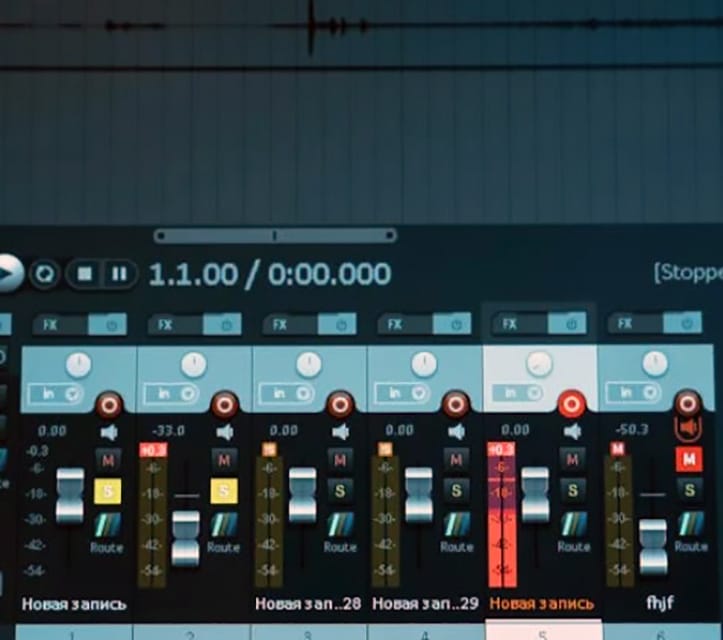
The gain range is another crucial factor. A wide gain range provides flexibility, accommodating a variety of microphones and sound levels without distortion.
Knowing I have room to adjust and gain empowers me to get the best possible sound without unpleasant noise.
Software Bundles and DAW Compatibility
When looking at budget audio interfaces, the software bundle and DAW compatibility are key considerations. Many interfaces come with valuable software packages that enhance recording capabilities, and they must integrate smoothly with the DAW of your choice.
Included Software
One of the delights of budget audio interfaces is the software bundle. Many interfaces are accompanied by a suite of tools that transform a basic setup into a powerful recording hub. It’s not unusual to find inclusions like the Studio Magic Plug-In Suite, which can be worth more than the interface itself.

Interfaces might offer a range of plug-ins. These plug-ins enrich your recording experience by providing effects and enhancements.
It’s like getting a handful of new colors for your musical palette, enabling me to craft more sophisticated sounds. The flexibility this provides is invaluable for creativity.
Getting familiar with the bundled software is relatively straightforward. You’ll find user-friendly guides that ensure even beginners can dive in without a hitch.
The setup might differ slightly between software, but the overall experience should be seamless.
DAW Integration
DAW integration is a crucial aspect of any audio interface. Many budget interfaces offer compatibility with major DAWs, such as Ableton Live, Pro Tools, and Logic Pro. Some models come with their own DAW software, such as Tracktion’s Music Production software. These bundled DAWs can be a great starting point for those new to recording. Yet, advanced users might still opt for industry-standard DAWs depending on their needs.
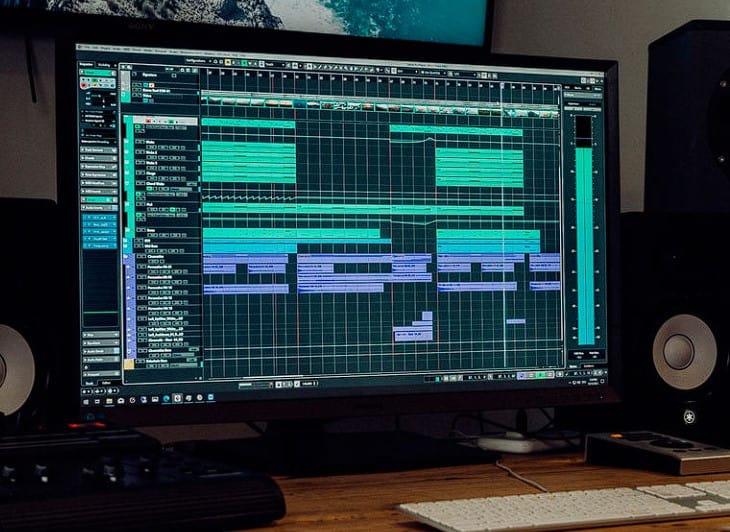
Choosing an interface that supports ASIO4ALL can be particularly helpful for Windows users. This driver enhances performance and significantly reduces latency.
It’s the little details like ASIO4ALL compatibility that make working with your DAW smoother and more productive.
Essential Specifications for Quality Recordings
Understanding the essential specifications can make all the difference when creating exceptional audio recordings. Key factors like resolution, sample rates, dynamic range, and headroom play crucial roles in determining the final quality of your recordings.
Resolution and Sample Rates
Resolution and sample rates are key indicators of quality in audio recording. I aim for 24-bit/192 kHz as the gold standard, which provides a crisp and detailed sound profile.
For most home recording projects, settling at 24-bit/48 kHz can deliver excellent results without overwhelming your system.
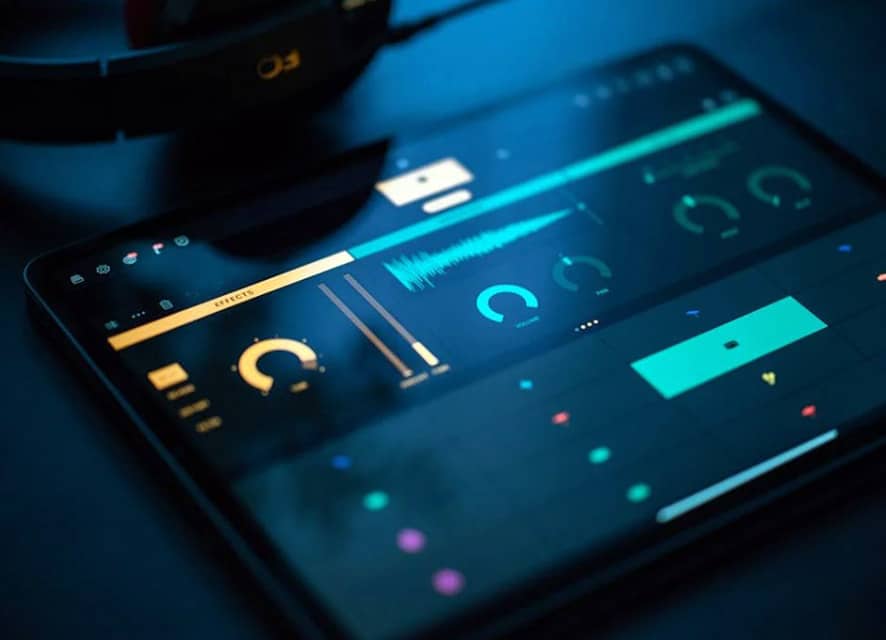
Higher resolutions capture more detail, akin to how a high-definition camera captures nuances in a picture. It’s like giving your audio extra pixels, allowing for clearer and more precise sound.
Lower sample rates, while still valid, might miss subtle harmonics. This loss can affect the richness and depth of the recording.
Dynamic Range and Headroom
Dynamic range and headroom ensure that both the softest whispers and powerful crescendos have space to shine. A substantial dynamic range prevents distortion and compression. It captures variations in sound intensity, preserving the genuine emotion of performances.
I’m a stickler for keeping ample headroom. It provides a buffer zone between the loudest part of the signal and distortion, helping manage peaks in the audio without clipping or distortion. It ensures the recording remains clean and vibrant. Effective headroom management enhances the overall recording quality, giving the mix room to breathe and allowing your work to sound professional and polished.
Recording in Different Environments
Finding the right audio interface for different recording environments can significantly impact sound quality and workflow. Whether setting up a home studio or recording on the go, choosing the right equipment helps produce the best results.
Home Studio Setup
In my home studio, creating an environment that supports seamless recording with a budget-friendly audio interface is vital. I prioritize interfaces like the iD4 MkII or Focusrite Scarlett Solo, which are known for their easy-to-use features and excellent sound quality.
Both deliver high-quality sound and fit comfortably within my budget constraints.
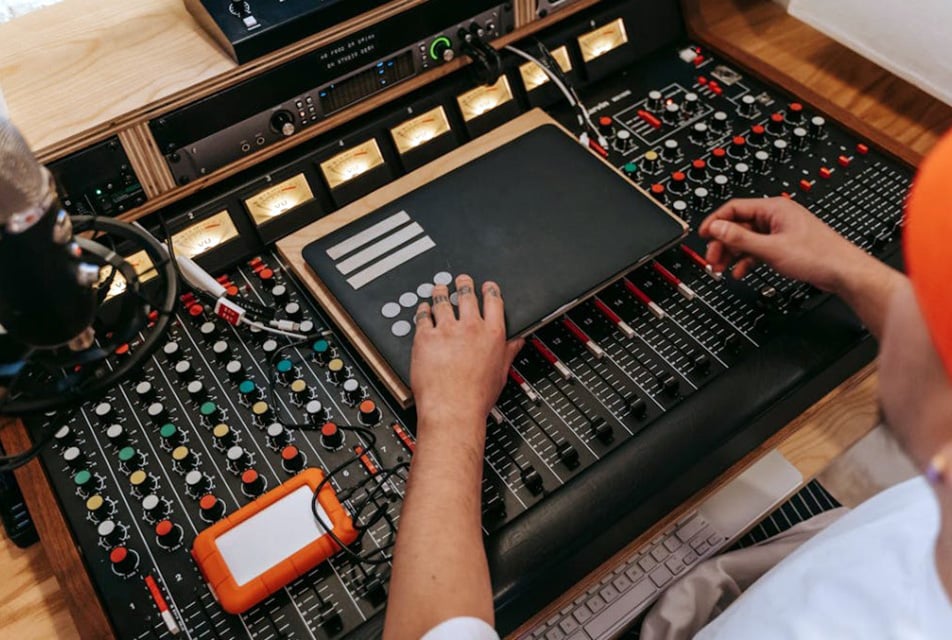
I also focus on soundproofing the room to minimize external noise. Acoustic treatment enhances sound quality by reducing unwanted reflections and echoes.
When using dynamic microphones, I ensure that they are paired with a preamp to boost their low output, ensuring clear vocal or instrumental recordings.
A reliable computer and the right software play key roles in optimizing the recording setup. The software integration with these interfaces often allows me to fine-tune recordings and effectively capture different sound nuances.
Mobile Recording Solutions
For mobile recording, portability and simplicity become my main focus. I lean toward compact audio interfaces like the M-Track Duo or Behringer U-PHORIA UMC404HD, which deliver reliable performance on the move. These devices fit easily into a backpack, allowing me to capture recordings wherever inspiration strikes.
Battery-powered or USB-powered interfaces offer convenient solutions for mobile setups. They eliminate the need for cumbersome power cords, making the recording process hassle-free in any location.
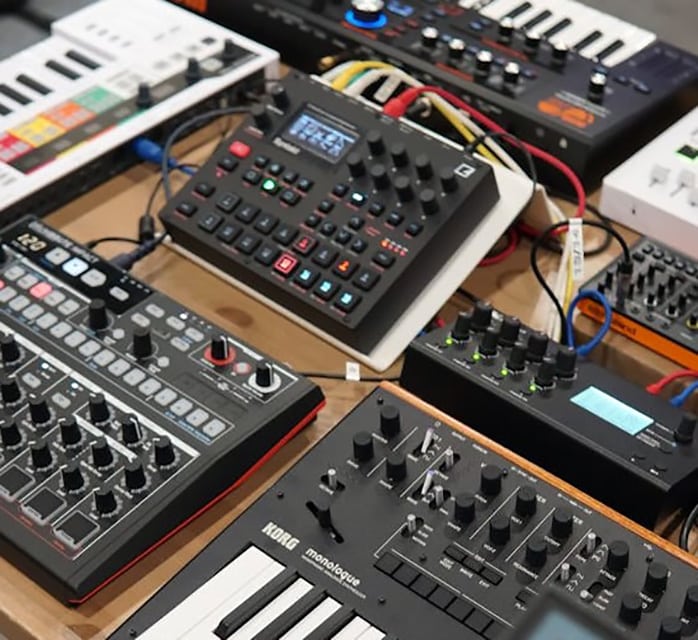
Robust protective cases are essential for safeguarding equipment during transportation. Additionally, using lightweight, sturdy stands and mounts ensures stable microphone positioning in varying recording environments.
Good sound consistency, regardless of location, results from a well-thought-out setup that balances quality and convenience.
Setting Up Your Audio Interface
When setting up your audio interface, the goal is to ensure seamless connectivity and optimal performance. Proper installation and optimized settings are key for achieving high-quality audio, whether you’re working with instruments or recording vocals.
Installation and Configuration
With the right approach, getting started with your audio interface can be a breeze. First, I connect the interface to my computer using a USB cable. Many modern interfaces are plug-and-play, making them easy to set up without needing additional drivers.
Next, I open the sound settings on my computer and select the audio interface as the default input and output device. This step is crucial for ensuring that all audio is routed through the interface.
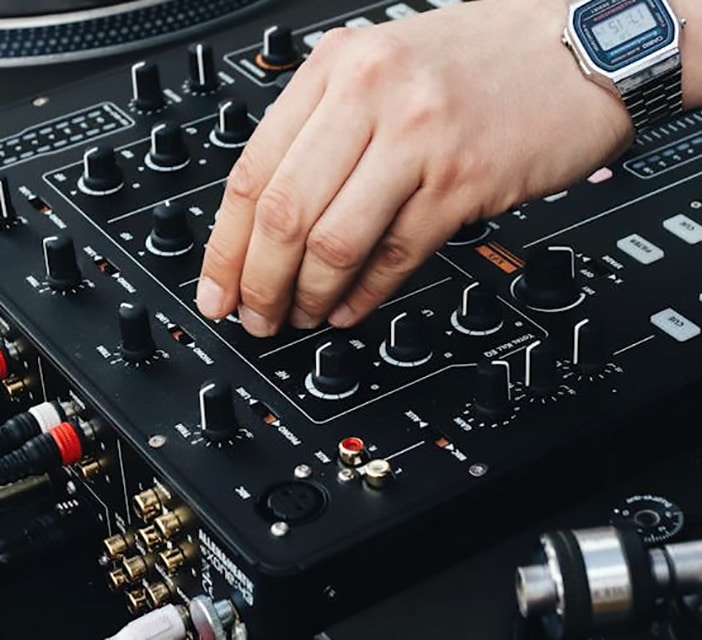
Additionally, I adjust the sample rate and buffer size according to my recording needs, typically opting for a higher sample rate like 24-bit/96kHz for more precise sound. This setup provides a solid foundation for any recording project.
Optimizing for Instruments and Vocals
Once the interface is up and running, I focus on optimizing it for both instruments and vocals.
I connect instruments, especially guitars and keyboards, using the appropriate inputs, such as the 1/4-inch TRS or MIDI inputs for digital instruments.

I ensure the input gain is adjusted to capture clean sound without clipping. For vocals, I usually connect a microphone using an XLR cable. I preview my levels while adjusting the gain to ensure the vocals are crisp and clear.
An essential step is using a pop filter to minimize plosive sounds during vocal recording. With these adjustments, both instrumental and vocal recordings remain high-quality, capturing all the nuances I aim for in my projects.
Advanced Audio Interface Features
When stepping into the world of advanced audio interfaces, it’s easy to get excited about high-quality preamps and flexible expandability options. These features can vastly enhance your recording and production experience by offering superior sound quality and greater connectivity.
High-end preamps and AD/DA Converters
I’ve always found that top-notch preamps are the heart of advanced audio interfaces.
They play a significant role in capturing detailed and accurate sound from microphones, and the signal-to-noise ratio dramatically improves with high-end preamps.
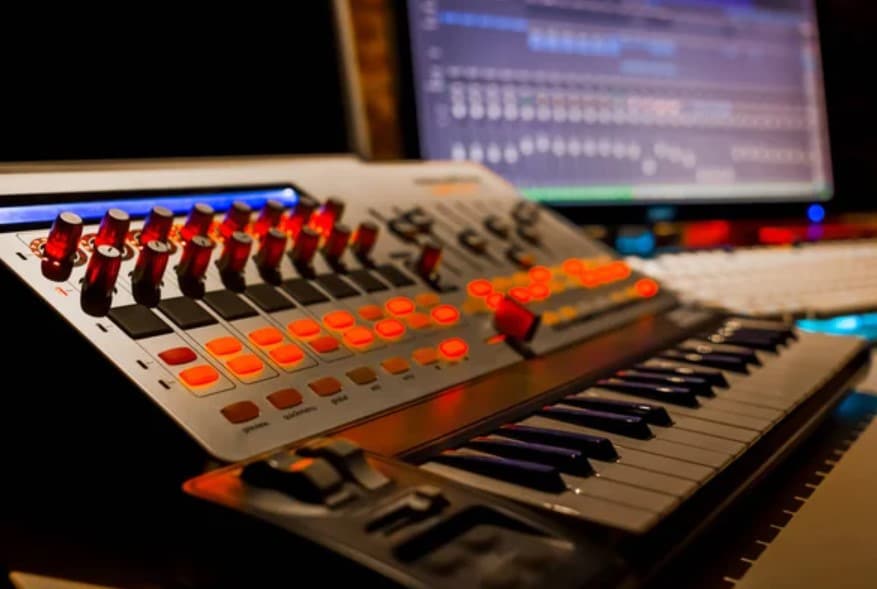
Simultaneously, advanced AD/DA converters ensure pristine audio conversion. This means every nuance of the sound is precisely captured and reproduced.
The converters maintain high audio resolution, offering crisp and clear recordings.
Expandability and Additional Ports
Another thrilling aspect is its expandability and additional ports. Expandability means more than just adding extra physical connections, like MIDI In/Out and stereo line-outs. It grants you the flexibility to incorporate more instruments and external devices.
Utilizing multiple ports allows seamless integration into larger setups. This versatility makes production more fluid and adaptable as needs evolve.
With these features, the potential to customize and expand your setup feels almost limitless.
Cheapest Audio Interface
Recap
When searching for the best budget audio interface, many audio engineer recommend the Universal Audio Volt for its impressive features and sound quality at a reasonable price. This digital audio workstation (DAW) companion is perfect for those who want to enhance their home studio without breaking the bank.
In addition to the Volt, there are several other cheap audio interfaces that offer excellent performance, making them great options for beginners and professionals alike. With a reliable headphone output and user-friendly design, these budget-friendly audio interfaces allow you to monitor your recordings effectively while staying within your budget.
Here’s a nifty breakdown from the article:
Top Choice: Focusrite Scarlett Solo
Budget Marvel: Behringer U-Phoria Umc404Hd Audio Interface
Best under $50: Presonus Audiobox Usb 96
When selecting an interface, consider what will best suit your recording needs. Whether you’re making podcasts, music production, or simple audio edits, there’s an interface for you.
It’s worth considering the inputs and outputs you need. Some affordable models even support 24-bit/192kHz audio, which is fantastic for the price.
Exploring best audio interfaces is a rewarding journey. With a bit of research, you can find a gem that suits both your needs and your wallet.
Happy recording!
Keep reading…
Discover the top-rated options in the Best Professional Audio Interface Revealed to elevate your recording setup and achieve outstanding sound quality.
FAQ's
The price of an audio interface can range from $50 to over $500, depending on features, brand, and quality, so you should choose one that fits your budget and meets your specific recording needs.
Yes, a cheap audio interface can affect sound quality, as lower-priced models may have inferior components and less effective converters, leading to degraded audio performance compared to higher-quality interfaces.
Instead of an audio interface, you can use a USB microphone or a mixer with USB output, which can connect directly to your computer for recording and playback.
Audio interfaces can be expensive due to the high-quality components, advanced technology, and features they offer, such as superior analog-to-digital converters, low-latency performance, and multiple input/output options that enhance audio recording and playback quality.


